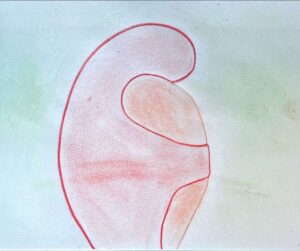One of the hardest times in life is when you find yourself in a place where there is so much pain it is hard to go on. That pain can be physical in origin, or it may be emotional in origin. Whatever the source of the pain it is there. And you may find yourself in a place where it hurts so much you don’t know how to go on.
It is hard when you feel life is too hard to go on with. You may reach out for help. If you are lucky the person you reach out to will listen to you and support you. Sadly that is often not the case. Jodie came to see me because, when her family in financial difficulties she had lost her job. She felt she had let her family down and should be contributing to the family rather than being a drain on them. She blamed herself for her job loss. She had reached out to her doctor after she found herself spending her days lying in bed thinking she was useless and only cost her husband and children money. She believed the terrible financial situation her family was in was her fault. She concluded she was better off dead. One part of her felt she should try to get help so she went to her doctor. She told the doctor she was feeling life was too hard and she wanted to kill herself. The doctor put her off by telling her she would discuss this later and then insisted she have blood tests to check her cholesterol levels and check for diabetes. The doctor’s reasoning was that she hadn’t had these tests for a few years and she was due for more. The doctor was not interested in even discussing her suicidal feelings. Two more doctor visits and the doctor never mentioned her suicidal feelings, even when she tried to talk about them to her. Fortunately she came to see me and was able to talk and be heard. Today she is feeling much better and does not spend her days crying and wanting to kill herself.
What was she able to do through counselling? What helped her is listed below.
1. She realised her pain was valid. She came to counselling believing she had no right to be hurting at the terrible turn her life had taken. She came believing the horrible things happening to her family were her fault. She realised first that the pain she was feeling was genuine and very real. It was no surprise she was hurting after losing her job and being so worried about how the family would cope with one less income. When she realised her pain was valid, a lot of the stress she experienced about feeling that way went. She realised it was okay to feel devastated at losing her job. She understood it was okay to hurt and worry about her family finances. She was able to see that it was not her fault. Once she understood these things, it was easier to deal with the pain and talk about it to her family.
2. She realised she was not weak for thinking her family would be better off if she killed herself. What was happening for her was that she was overwhelmed with things in her life and was struggling to cope. She was experiencing a situation that would cause other people great stress. Her reaction was understandable. That helped her feel less alone and less ashamed of talking about her feelings.
3. She realised that she had a right to ask for help and receive it. Feeling suicidal did not mean she had lost the right to get help. Someone in that level of physical pain would not feel they had no right to ask for help. She came to learn that those suffering emotional pain had the right to ask for help as well. Jodie also realised that she felt ashamed at needing to visit a counsellor. She was able to work through those feelings of shame. She learned that asking for help was a strong, healthy thing to do.
4. Jodie had struggled with friends who dismissed her feelings. One told her she was attention seeking. Jodie realised she deserved support from her friends. She made the decision to distance herself from the unsupportive friends and not feel guilty at doing so. She deserved to be supported. A true friend will offer support and love, not lack of support or judgement. She learned that she had two lovely caring friends who were very supportive for her during her healing and continue to support her today. She realised she had a right to expect understanding, support and validation of her pain.
5. Jodie learned she did not need to feel guilty at wanting to kill herself. She realised she had internalised the belief that suicide was a crime and wrong. This had held her back from asking for help initially. Then it had caused her to not want to tell anyone she was seeing a counsellor. After a number of sessions she was able to challenge that belief. With counselling she was able to challenge also the belief she was a burden on her family.
6. Finally Jodie was able to work through the pain she had been feeling and come to the realisation that the pain was temporary. One day she found herself feeling moments of happiness. Another day she found herself coming up with a plan of something to do to help herself and her family. She came to the realisation that she was finding joy in her life again. She felt that was an important learning. She determined that if she felt this much pain again she could know that the pain was only temporary and that she needed to seek help to assist her to work through the pain.

